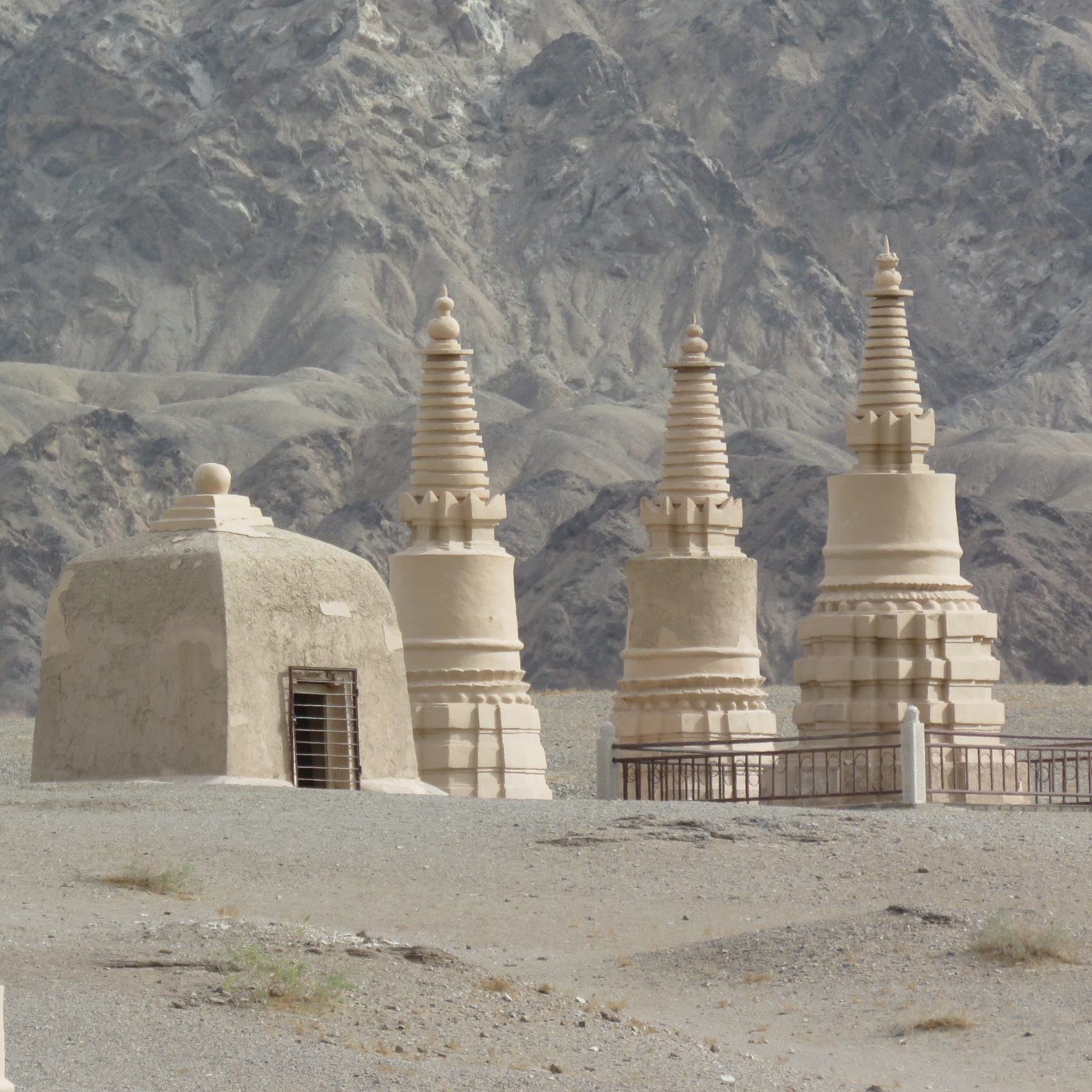1600 years ago, the Silk Road was in full use. China was exporting silk, gunpowder and other goods, and bringing back with them spices, glass and culture. This is how Buddhism came to China.

One particular monk saw a certain mountain side and decided to create a cave and a place where he could meditate. Soon, others started joining him, and over the next 1000 years, more than 1000 caves were dug out. Some were for meditation, some were elaborately painted and sculpted with Buddist mythology. More than 1000 Buddhas were carved in this mountain side.

These incredible caves are known as the Mogao Grottos. They are a treasure trove of history, culture and art. Tourists flock there today to see the caves that are open to the public. There are about 500 remaining now, and many are still in their original form, untouched.

We spent the last day of our holiday visiting these Grottos and learning the history of this site. We visited 8 caves in total, including the library, which was once home to more than 50,000 cultural and historical artifacts. Unfortunately, French and British archeologists took a lot of these artifacts themselves and left only 13,000 or so in China.

The walls of each cave are covered in art (much of it is original), and every inch of the caves we saw were elaborately decorated with colour, sculptures and reliefs. Glass separates tourists, protecting the art from the hands of selfish tourists who don’t understand how to respect the culture and religions of others.

Because this is a sacred Buddhist site, photography isn’t allowed in the caves, so I don’t have my own photos of the interior. Luckily, there are several official websites that have authorized photos of some of the caves that I can share with you!



It’s fine to take photos on the grounds of the Grottos, so we did plenty of that as well.
There is a museum on sight as well that explains how the caves were designed and now the art was created. I found it to be very educational. I have no artistic talent at all, so it is nice having it explained to me!

Up close photos of the ceiling panels 
How the Buddahs were constructed step by step 
How the walls were smoothed, polished and painted 
The different natural pigments that are still holding up 1700 years later! 
History regarding the construction of the grottos
As you leave the grottos, there are some beautiful stupas to admire as well. They were created to show respect the monks who were key in creating the Grottos and the way they stand out against the desert and mountains is really beautiful.


If you’re going to the Mogao Grottos, be sure to book your tickets at least a day in advance. Foreigners need to do this in person. The tour isn’t cheap (more than 250rmb per person), but it includes 2 educational videos about the site, as well as an English speaking tour guide, AND entrance into 8 caves (there is a cheaper option, but all in Chinese and you only get access to 4 caves). Lonely Planet has some good instructions on where to get the tickets.

That wraps up our trip to Gansu province. Now, it’s time for me to catch up on some of those posts I promised but never completed!!!










Hi Marie: Just want to let you know how much I enjoy viewing and reading about your travels and life in China! This most recent vacation was fascinating – I’ve never heard of ANY of these places! It’s amazing how the Chinese have preserved, yet made accessible the cultural and natural wonders. And, wow,from viewing your pics that’s despite very heavy tourist traffic. The two of you have been there for several years…are you conversant in the language? (re the ‘Notify me’ buttons below…you already do, so I will leave them unchecked. Please do continue to send the updates!)